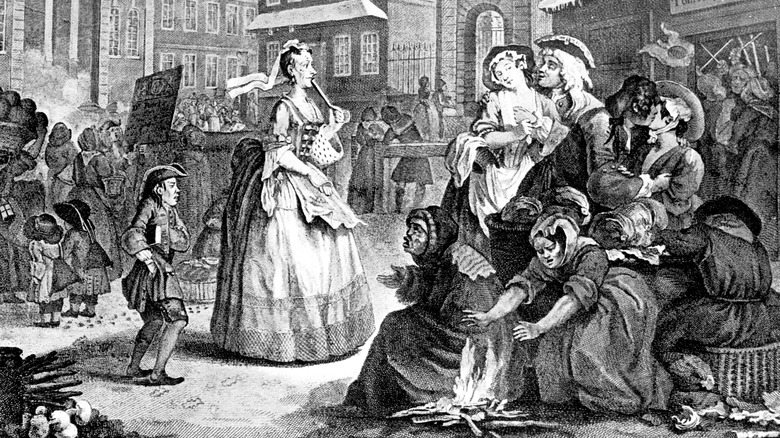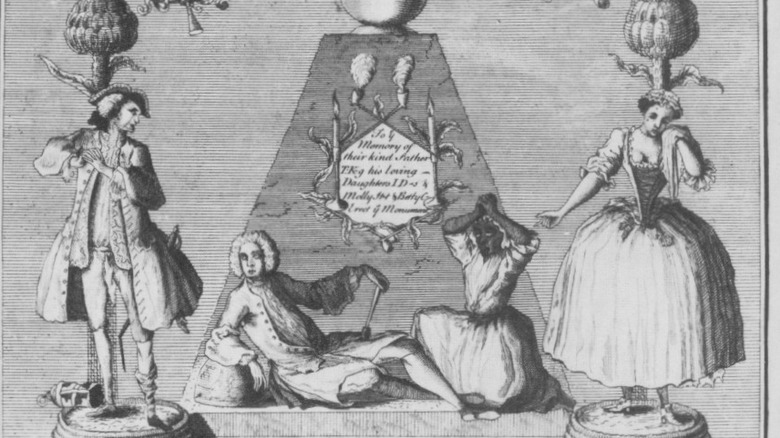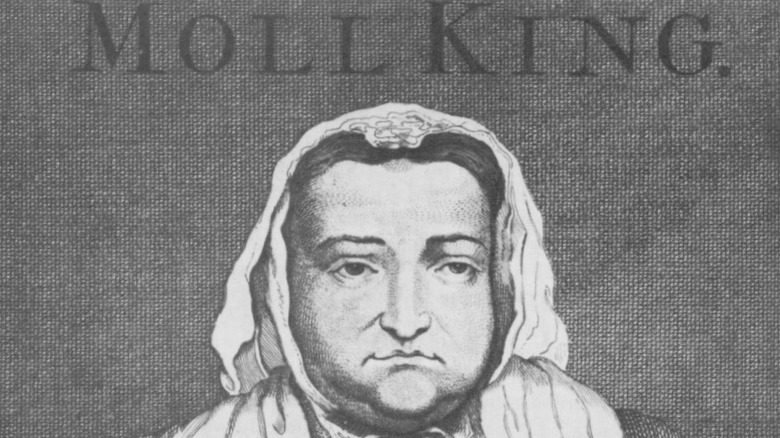This Seemingly Innocent 18th-Century London Coffee House Had A Different Purpose
In 18th century London, if you were looking for a good time late at night, whether you were royalty, an artist, or a laborer, the place to be was Tom King's Coffee-house. The business was in Covent Garden, a neighborhood in Central London that by day had a thriving outdoor market, but at night was known for more nefarious pursuits, according to Covent Garden Memories. And Tom King's Coffee-house was the centerpiece of the neighborhood's debauchery.
Beginning in the mid-17th century, coffeehouses became all the rage in London as places to imbibe coffee, a new drink from Turkey, and as gathering spots for artists, writers, and politicians, according to Historic UK. Sometime around 1728, when Tom and his wife Mary, better known as Moll, opened for business, they kept extremely early hours to accommodate the schedules of the market's workers, according to "Eighteenth-Century Coffee House Culture, Vol. 2." But, soon the Kings began catering to a different clientele.
Caffeine Was the Tamest Thing They Offered
While the Kings originally sold coffee, chocolate, and tea, they soon began serving alcohol, according to Londonist. It was a smart move that brought late-night revelers to the coffeehouse, including artists and writers like William Hogarth, Henry Fielding, and Alexander Pope. English nobles also began frequenting the Kings' establishment in all their finery — "brocaded silk coats" and swords — to mingle with the lower classes, according to the 1866 book "Clubs and Club Life in London." The business' bartender, a Black woman known as Black Betty was also a big draw, per "Coffee: A Drink for the Devil."
The Kings expanded their operations to include prostitution, sort of. In order to get around the law, they acted as intermediaries between sex workers and their customers, with the sex occurring off premises, per All Things Georgian. Soon Tom King's Coffeehouse became notorious enough to be name-checked by the artists and writers who hung out there. "What rake is unaware of King's Coffee-house?," Fielding would ask in the prologue of his 1732 play "The Covent Garden Tragedy." Hogarth would feature the business in his 1738 engraving "Morning," which depicts noblemen carousing with several women in front of the coffeehouse while inside the establishment men wave their swords around and someone's wig flies out the door.
Moll King Takes Over
Tom and Moll King were quite the pair. He came from the upper class, having been educated at Eaton and then Cambridge, before leaving there under mysterious circumstances without graduating, and ended up working in the Covent Garden Market where he met Moll, according to "All Things Georgian." Moll came from humbler circumstances. She was the daughter of a cobbler, per "Rethinking Politeness in 18th Century England." Moll was working at the Covent Garden Market selling nuts when she met Tom. The two married and did so well with their coffeehouse business, thanks to the above-mentioned illegal components, that they could afford an estate near Hampstead, and built two other homes, per "All Things Georgian."
In 1737, Tom died, leaving Moll to run the business alone, according to "Rethinking Politeness in 18th Century England." Moll King's Coffee-house continued to be celebrated, even though it was most often described as being little more than a shed, and the authorities often fined Moll for "keeping a disorderly house," the common phrase for a brothel, according to "Clubs and Club Life in London." Moll King retired from the business, perhaps sick of run-ins with the law, and died in 1747 at her estate, per "Clubs and Club Life in London," but thanks to its notoriety the Kings' business lives on in the work of famous artists and writers of the 18th century.


